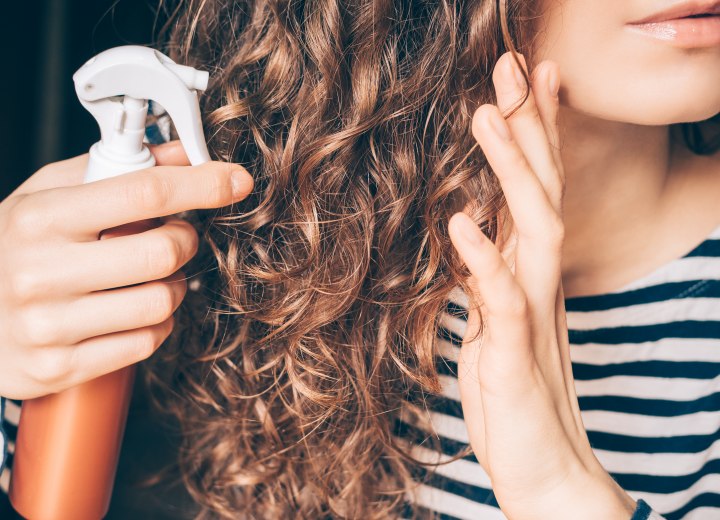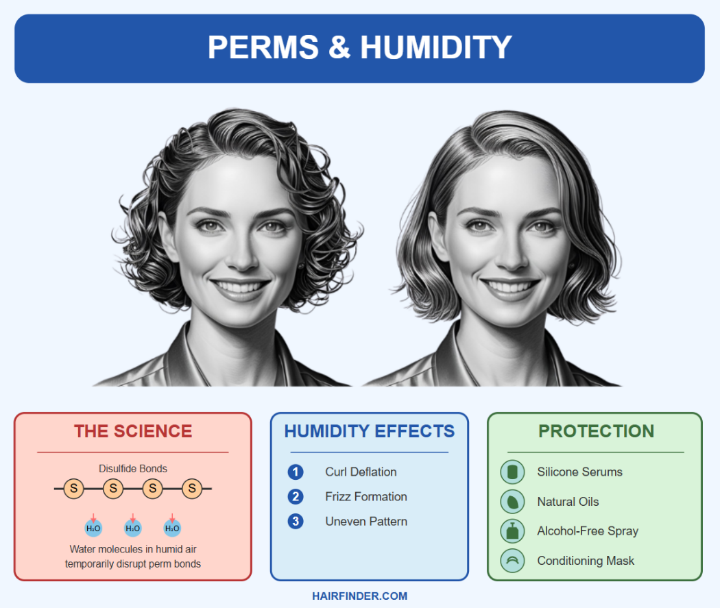Perm and Humidity

A: If you’re wondering whether humidity affects permed hair, the answer is a definite yes. In fact, humidity can often have an even greater impact on permed hair than it does on naturally curly hair. The chemical process behind a perm fundamentally changes the structure of your hair, making it more vulnerable to environmental moisture. Because perming involves breaking and reforming the disulfide bonds in your hair’s keratin structure, the hair becomes more porous. The cuticle layer expands during the process, allowing hair to absorb moisture from the air much more easily. As a result, permed hair reacts strongly to humidity.
Fortunately, there are ways to protect your perm from the effects of humidity. Products like silicone-based serums can help by creating a barrier that seals the cuticle against moisture. Lightweight natural oils, such as argan, jojoba, or camellia oil, are also effective in preventing excess absorption. To maintain your style without adding dryness, an alcohol-free hairspray can provide a light protective shield. Deep conditioning treatments done regularly are crucial too, as they help balance the hair’s moisture levels and improve its resilience against environmental changes.
In addition to product choices, certain techniques can make a difference. Using a microfiber towel to dry your hair minimizes frizz, while blow-drying with a diffuser attachment helps preserve the curl pattern. On particularly humid days, protective styling like loose updos can shield your curls from the worst of the moisture, and sleeping on satin pillowcases can prevent nighttime frizz and hair breakage.

For the best results, it’s always a good idea to consult with your stylist. They can give you personalized recommendations for managing your perm based on your hair texture, the type of perm you have, and the specific challenges posed by your local climate.
©Hairfinder.com
See also:
Curly hair and humidity
How to maintain your hairstyle in humid weather
Does outside humidity have any effect on how a perm takes?
Are there any chemicals in a perm that will be affected by high humidity?